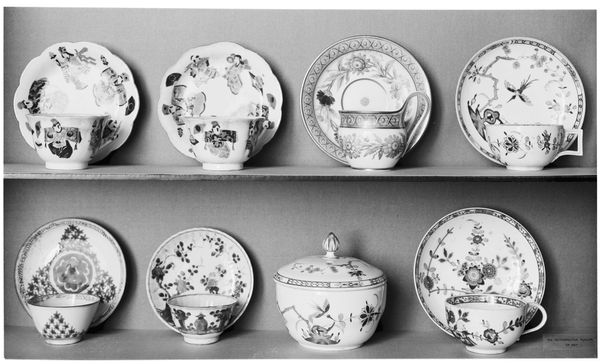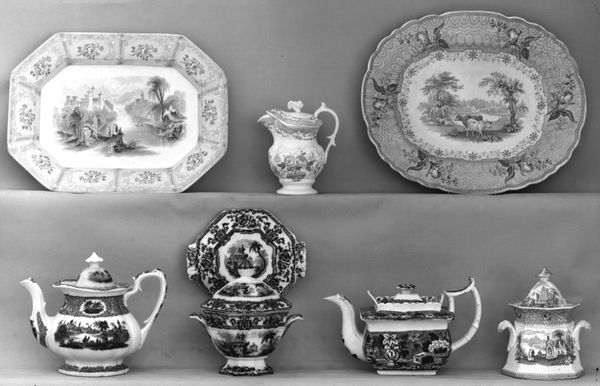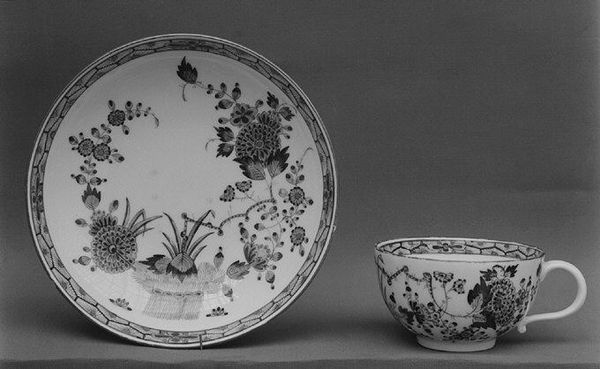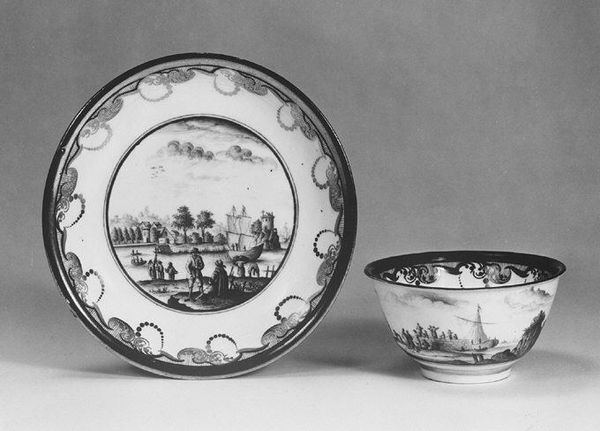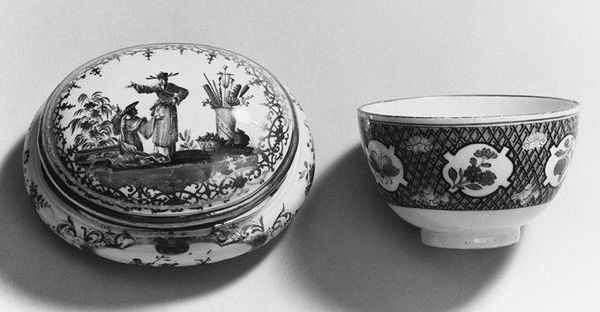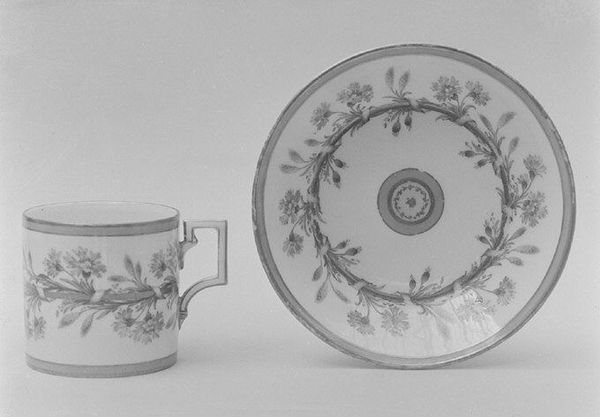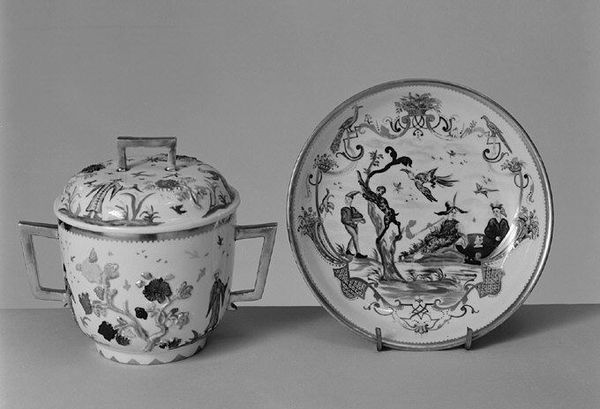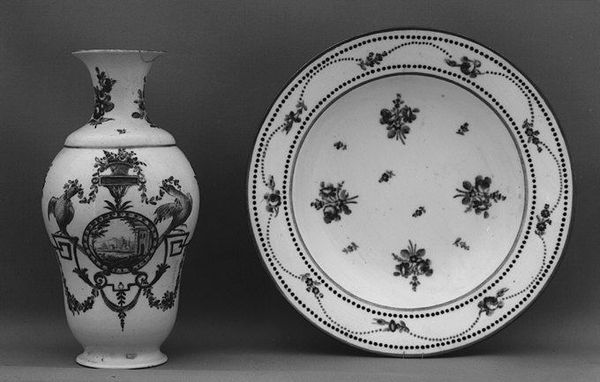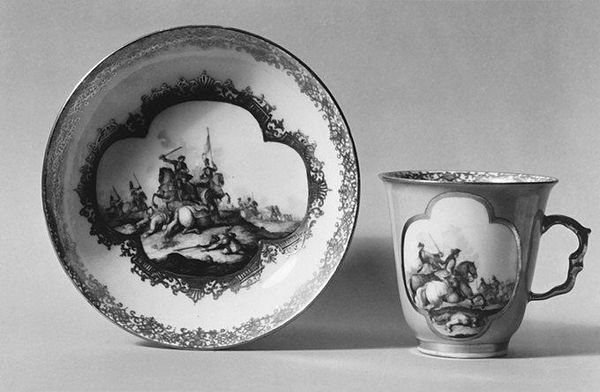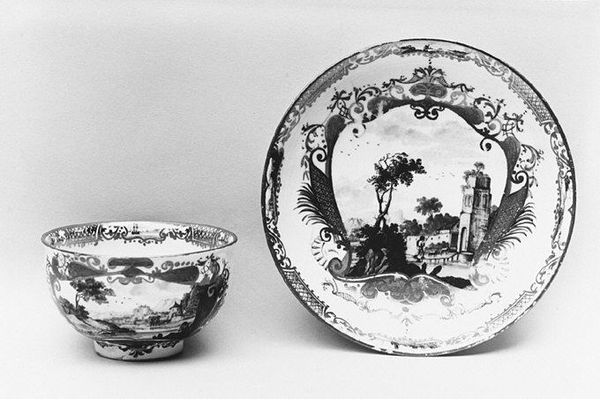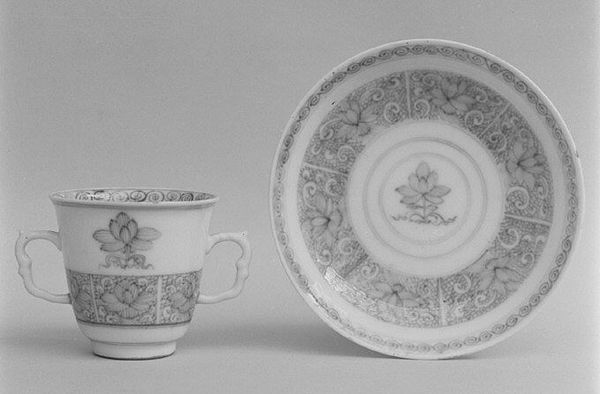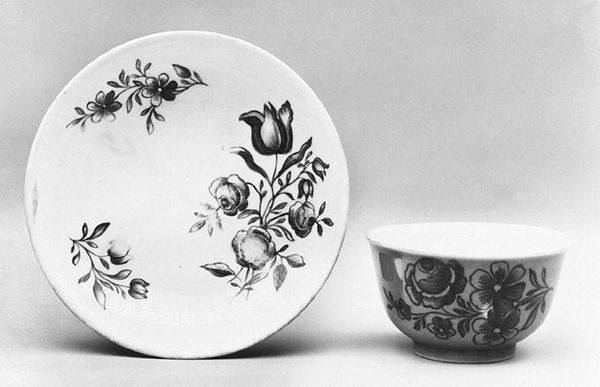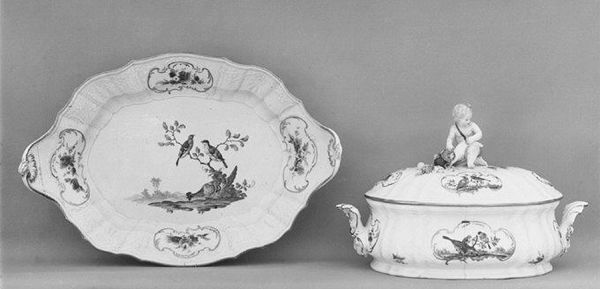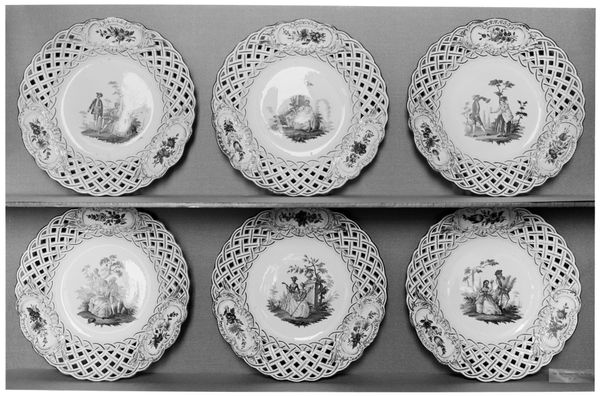
ceramic, sculpture
#
ceramic
#
sculpture
#
decorative-art
Dimensions: Height (cup): 2 1/4 in. (5.7 cm); Diameter (saucer): 5 5/8 in. (14.3 cm)
Copyright: Public Domain
Editor: This display features a “Cup and saucer,” dating back to the 18th or 19th century, attributed to Enoch Wood and is crafted from ceramic. It resides at the Metropolitan Museum of Art. Looking at these various ceramic items, I immediately notice a peculiar assortment of narrative scenes; a strange selection for what I think would be dinnerware. What do you make of this assemblage of household sculpture? Curator: Well, I see a reflection of the stories we tell ourselves. Don't you think so? Imagine, sipping tea while gazing at pastoral scenes or figures rising from graves. It is intimate theater. What is striking is that we see transfer-printed decoration being popularized, a way to put a little art in everyone's hands—or, in this case, their cupboards! Almost a democratic art form, wouldn't you say? Editor: A democratic art form in the cupboard – I love that idea. What does the use of ceramic mean in the historical context, thinking about utility, material, and design? Curator: Ceramic at the time meant a kind of durability mingled with accessibility. Pottery wasn’t precious, but it was ever-present. Transfer printing on it transformed the most basic ware into storytellers, bearers of current events, mythology and popular imagery, something for everyone. They made the mundane a bit magical! They would give one the opportunity to daydream a little. Don’t you see? Editor: Daydreaming over dinnerware. So these aren't just cups and saucers; they're tiny stages for our imaginations! Curator: Precisely. We find ourselves asking if this is functional art, or sculptural theatre, but maybe they are one in the same. Each piece is like a snippet of history frozen in clay, don't you agree? Editor: That adds so much depth, I had considered it only on face value, now it comes alive!
Comments
No comments
Be the first to comment and join the conversation on the ultimate creative platform.
